Aquarium shark catfish: description, care and breeding
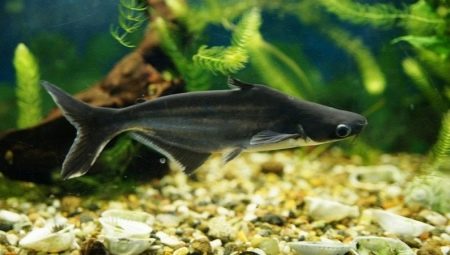
In recent years, raising decorative sharks in the aquarium has become more and more popular. With their appearance, these creatures delight and at the same time frighten. One of the varieties of exotic fish is the shark catfish, or pangasius. Read more about its content in the article.
Description
Pengasianodon Hypophthalmus is a ray-finned fish. Belongs to the Pangasiev family and the Catfish order. It is worth noting that this species has several names. So, among the breeders you can hear the names "freshwater shark" and "Siamese catfish", the more common - "shark catfish"... Shark pangasius prefers to live in the warm waters of Southeast Asia, especially freshwater bodies in Laos, Vietnam, Thailand. According to scientists, the largest population is found in the Chao Phraya and Mekong rivers. By the way, today shark catfish is a commercial fish, as its meat has a good taste. For this reason, the population of these peaceful sharks is declining.
The pangasius has a fairly dense build. The body is completely covered with smooth skin, no scales. The head is triangular, slightly flattened. The catfish muzzle is similar to that of an ordinary shark. Another similarity is the triangular dorsal fin.
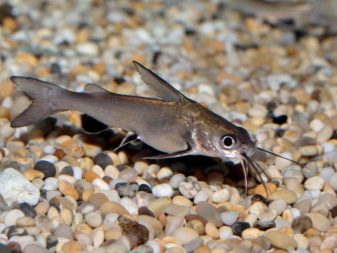
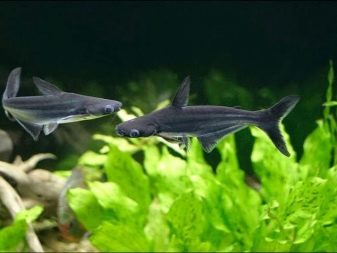
You can also notice the antennae on either side of the mouth. The eyes of the fish are large, the shape is rounded. The caudal fin has two lobes. As for color, individuals of this species are more often found with silvery skin. In addition, long stripes are visible on the body. The fins are dark brown; an individual with black fins is extremely rare. Interesting: there are carriers of very light skin, so scientists called them albinos.
In catfish, an amazing feature is noted - the color of the body changes as they grow older. So, an adult can darken significantly, up to black, however, the abdomen always remains silvery. As for the fins, in juveniles they are rather light gray, almost transparent, while in adults they are gray-blue with a silvery edging.
Inhabitants of open waters grow to large sizes - up to about 100 cm in length. Ornamental sharks reach 50-60 cm. Shark catfish is considered to be a real long-liver - with proper maintenance, it can easily live up to 20 years.
By nature, the fish is calm, peaceful. but the choice of neighbors must be taken seriously - do not add aggressive, predatory individuals to them... In addition, the shark catfish is a shy creature with poor eyesight.
For this reason, it is worthwhile to warn guests, relatives, family members in advance that knocking on the aquarium, as well as grabbing with hands, fishing is prohibited - they are very frightened. Also, pangasius does not accept sudden movements and loud sounds.
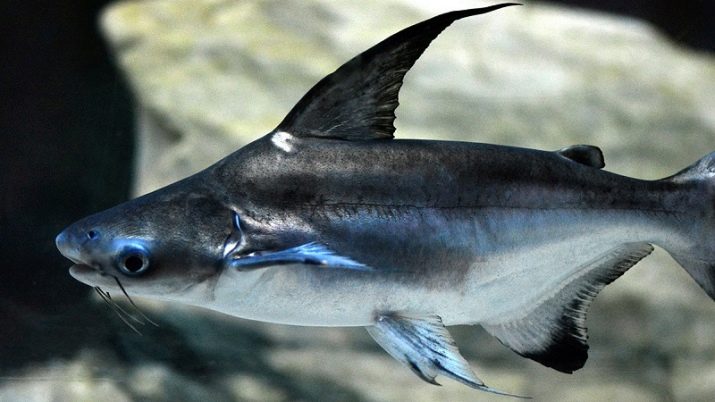
Conditions of detention
Freshwater aquarium fish are very popular today. However, the breeding of such species requires special conditions. So, for a comfortable stay of a shark catfish, it is necessary to create an atmosphere close to the natural one.
Experts recommend paying attention to several points regarding the correct maintenance of the pangasius at home.
- Since the decorative shark is a rather large creature, it needs space. Therefore, you should purchase aquariums with a volume of at least 500 liters. In addition, the fish is very active and mobile under water. For a whole flock of catfish, it is better to choose larger tanks - at least not less than 1000 liters.
- Freshwater sharks are thermophilic. Try to keep the water temperature between 22-27 degrees. Indicators of hardness - no more than 20 dh, acidity - 7.0–8.0 pH.
- The installation of a filter is mandatory - it is better to turn it on immediately at maximum power. Stagnant water negatively affects the well-being of the catfish, and also reduces visibility. You should also control the content of nitrates, ammonia, because these substances in excess are harmful to the pet. Helpful Hint: Add filtered water to the reservoir once a week.
- For the decoration of the aquarium, it is better to choose large decorative objects. Objects with sharp corners will not work: while moving, the fish may be injured by them. Smooth gravel and coarse sand are acceptable as a bottom cover.
Shark catfish loves to undermine the soil, and therefore the vegetation in the aquarium needs to be planted quite strong.
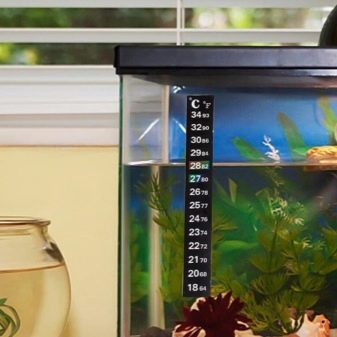

Feeding
The health of an aquarium pet is highly dependent on the quality of its nutrition. It is necessary to correctly formulate a daily diet and comply with all the recommendations of specialists or breeders. Poor quality food can lead to illness or stunted growth of the pet.
So, feeding domestic fish is based on a number of important principles:
- frequency of meals - no more than twice a day, portions should be small;
- an important element in the diet is protein, preferably animal;
- for the full growth of the pet, the menu should include shrimp, beef, squid, earthworms, frozen and live fish;
- it is recommended to combine live food with plant food - cucumbers, zucchini and cabbage leaves are suitable;
- shark catfish is very fond of porridge - you can give rice, buckwheat, millet;
- fasting days are obligatory about once a week - this method will help to avoid obesity of the fish.


Reproduction
In the open sea, pangasius does not have any particular difficulties with reproduction. Since females have rather high requirements for spawning grounds, this species of fish often changes its place of residence. While swimming, the catfish is looking for the perfect place to spawn.
So, the natural process in wild animals occurs from July to November... The female lays up to 100 thousand eggs at a time, and the fry appear already on the 4th day. Further, adult fish return to their previous way of life.
At home, this process is rare. Since the breeder is unable to create conditions as close as possible to natural conditions, the fish simply cannot begin to reproduce.
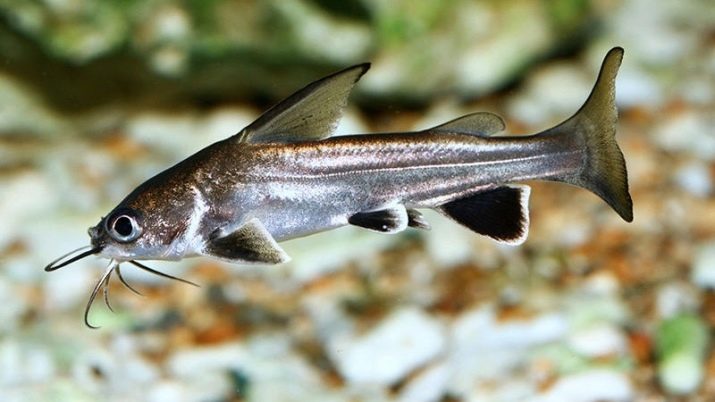
Compatibility with other fish
A mini-shark in its natural environment prefers to keep a flock of congeners. Its peaceful nature allows it to get along with other types of fish. However, it is better not to add large individuals to the catfish in the aquarium. And the reason is not that a large individual can eat a small one - it's all about the shy nature of the pangasius: he will simply get scared and huddle in a corner. The best solution would be to add small fish, which will make the catfish constantly move after prey.
For ornamental sharks, cichlids, knife fish, labeo, large and bream-like barbs, gourami, kalamoicht, and proportional polypters will become good neighbors. Experts also advise adding an iris. This is due to the fact that she, living in the lower layers, will pick up food debris, thereby cleaning up the dwelling behind the owner of the aquarium, who prefers to swim in the middle.
Interesting that shark catfish is very similar to one representative of cichlids - we are talking about striped cichlazoma... This fish is distinguished by a calm disposition, rather get along with other individuals. However, experts do not recommend adding her to the catfish. Why? Tsichlazoma is accustomed to spawning at the bottom of the aquarium, and the pangasius will interfere with this process, swimming in the territory of the cichlid. As a result, fish can collide and start to clash.

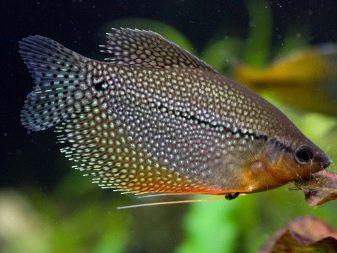
Diseases
Like any pet, shark catfish can get sick. The main reason for the poor health of fish is improper nutrition, as well as feeding of poor quality or unsuitable food. According to the breeders, mostly mini-sharks suffer from gastrointestinal disorders, in particular, poisoning and ulcerative manifestations. Equally important is the emotional state of the animal. As already mentioned, the shark catfish is very shy. Frightened, he can hide in a corner, and even worse - refuse to eat.
It is recommended that you consult with a specialist regarding care and nutrition before purchasing a marine pet. It should be remembered that the physical well-being of a domestic shark is influenced by external factors such as a spacious aquarium, a good filter, and regular cleaning of the tank. If it seems that the waste and hassle is too great, it is better to take a look at other types of ornamental fish that are distinguished by their unpretentious nature.
Shark catfish, or pangasius, is a calm and peaceful aquarium fish. Breeding at home requires special attention for the pet. First of all, you need to purchase a spacious aquarium, fill it with clean fresh water.

You also need to remember to regularly feed the fish with high-quality food and protect the timid catfish from unexpected neighbors and guests.
In the next video, you will find interesting information about this amazing fish.








